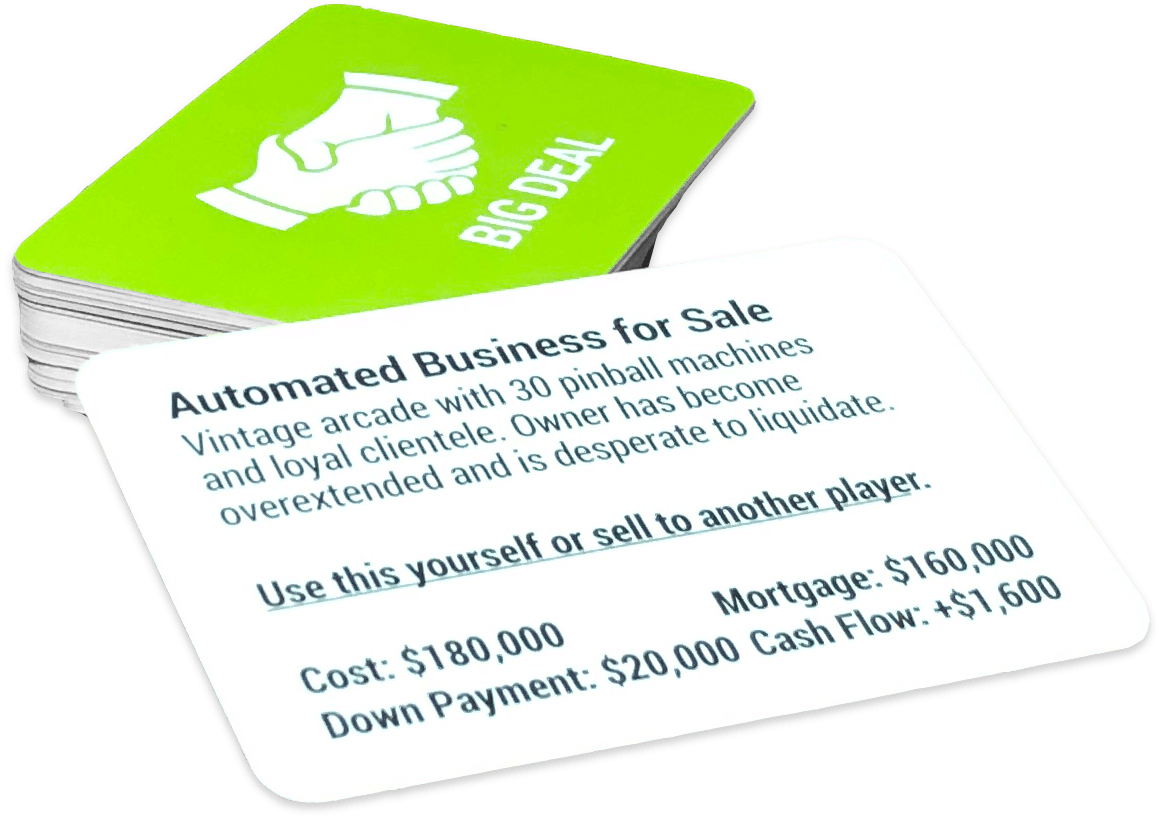

The financial statement is in place of "score cards".

The game forces the players to do the accounting themselves. While the players are competing to get on to the fast track the quickest, the game is open and requires that another player check or audit your financial accounting. Although the official winner is in the second stage, the main object and success in the game is focused on the ability to get out of the rat race. To win, a player must get his character to buy his "dream" or accumulate $50,000 in additional monthly cash flow. The winner is determined in the second stage, "the fast track", where the player is already rich. In the first, "the rat race", the player aims to raise his or her character's passive income to exceed the character's expenses through a variety of investment opportunities and understanding their money through accounting so they can exit the rat race. Kiyosaki stresses the value of games, particularly Monopoly, as tools for learning basic financial strategies such as "trade four green houses for one red hotel." Kiyosaki has created several games to reinforce the information and lessons in his books.Ĭashflow 101, currently revised and redesigned as just Cashflow, is a board game designed by Kiyosaki, which aims to teach the players financial literacy by filling in and updating a personal financial statement throughout the game and to focus on cash flow when investing to attain financial independence and "escape the Rat Race".
Cashflow 101 game strategies series#
A Rich Dad series of books followed there after with "Rich Dad Advisors" authoring many of them. Originally self-published before being picked up commercially, Kiyosaki followed the original book with Rich Dad's CASHFLOW Quadrant and then Rich Dad's Guide to Investing. The story shows the two fathers as being at about the same level of wealth when Robert was 9 years old and being vastly different by the time they passed away. His Rich Dad agrees to teach him and his own son about money when he asks and the lessons are told throughout the book. Through this story the book explains the differences between the values, beliefs, actions, and results of a "rich" and "poor" person from the perspective of a neutral and curious young Robert who observes his own dad who he calls Poor Dad and his best friends dad who is Rich Dad. The title of the book refers to the main story that is told about Robert Kiyosaki himself as a young boy at the age of 9 when he became curious about money. However, he argues that understanding money and being able to read financial statements and having financial literacy is the key to being successful in any area of investing. The book also highly advocates having a business, owning paper assets such as stocks, bonds, mutuals funds as well as being an entrepreneur.
Cashflow 101 game strategies how to#
The book does not outline steps on how to become rich or what specifically to invest in but Kiyosaki does identify real estate as the primary asset type that helps in attaining greater wealth because of its ability to generate cash flow while appreciating over time as well as having large tax saving benefits for Americans. The book explains that the wealthy teach their children about money to ensure their financial success in life while the poor and middle class rely mostly on the school system which does not teach anything about money, even at the college level in business schools. The author argues that the reason why so many poor and middle class people don't become rich is because they simply don't understand money and have values or beliefs that prevent them from getting there, such as "all rich people are greedy". Rich Dad Poor Dad was written by Robert Kiyosaki and advocates financial independence primarily through financial literacy and understanding money the way a rich person does.


 0 kommentar(er)
0 kommentar(er)
